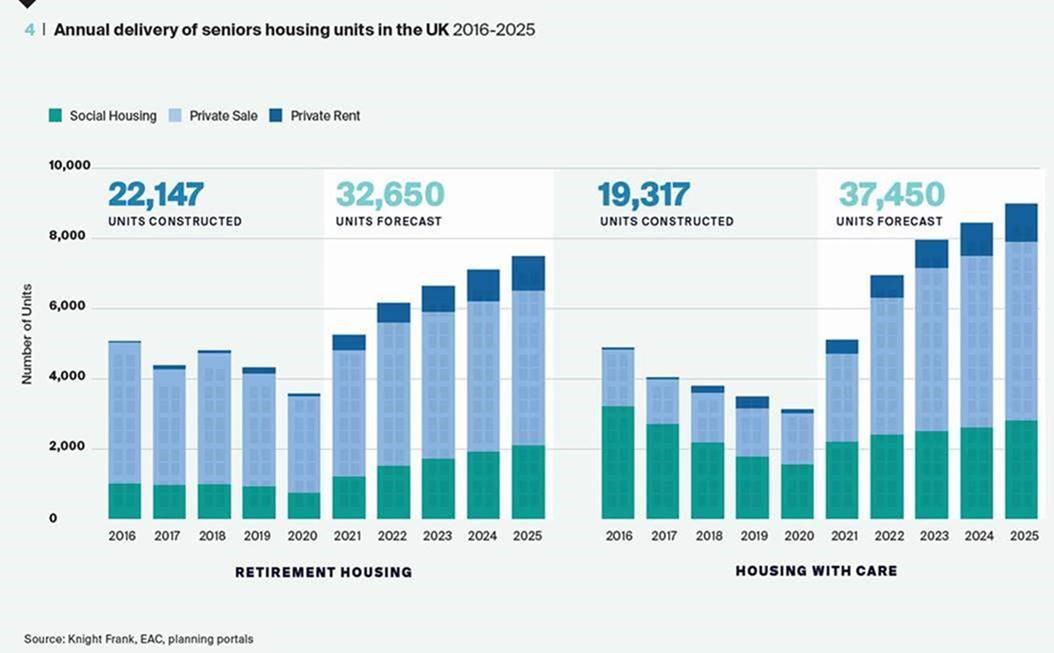What role can seniors housing play in solving the housing crisis?
The population is ageing and by 2050 one in four people in the UK will be over 65. More specialist housing is needed.
3 minutes to read
Included in the the possible solutions to housing an ageing population are a raft of zero-cost items that we explore in further detail here, along with the reasons why the lack of seniors housing delivery needs addressing urgently.
Earlier this month the House of Lords’ Built Environment Committee released a report on the challenges of meeting housing demand and solving the housing crisis.
Among other findings, the report noted that, to date, “little progress has been made on housing for the elderly”, and suggested that specialist seniors housing could be one part of the solution, a position we wholeheartedly agree with. However, we believe the report did not go far enough in explaining exactly how seniors housing can help solve these issues.
Demand outweighing supply
As we all know, there is an expanding senior population in the UK, which is being met with a very limited supply of housing. Our forecasts suggest that, while the number of specialist seniors housing units in the UK will grow by 9% over the next five years, the rate of delivery will be dwarfed by the UK’s ageing population, deepening the existing mismatch between supply and demand.
In real terms, it means that the number of seniors housing units per 1,000 individuals aged 75+ is expected to drop to 120 by 2025, down from 137 in 2010 and 128 currently.

Institutional investment
To solve this, there are significant challenges to consider, but these can be overcome by introducing more supply into the market, more propositions and more choice. With increasing institutional investment and a rapidly-growing mix of for sale and rental options, 2022 feels like it could represent a turning point for the UK’s seniors housing market.
There is an alignment of forces all pushing in same direction, which together will result in real progress being made in the sector. These include the long-awaited increase in social care funding; the reweighting of investment from established asset classes into residential investment (PBSA, PRS and seniors housing) a second wave of institutional investment into the seniors housing sector after the early movers of 2017-18; operators optimising their platforms through better design, more tenure options and increased provision of services; house price inflation; and an increase in the availability of development finance.
The Covid-19 pandemic has forced the need for a reassessment of housing and care provision in later life. Now is the time for the Government to get serious and include meeting the needs of our aging population in its current levelling-up agenda.
Zero-cost solutions
With the House of Lords report observing that little progress has been made to date, yet also noting that seniors housing is part of the solution, there are several zero-cost items that can support our aging population here and now.
This includes allocating a percentage of the country’s housing delivery target of 300,000 homes to be built as age-appropriate housing; holding local authorities to account to ensure seniors housing delivery is properly meeting local needs; giving more support to seniors housing in planning policy through its own planning use class; and committing to helping people step off the property ladder, which would indirectly help everyone within the property lifecycle, especially first time buyers.